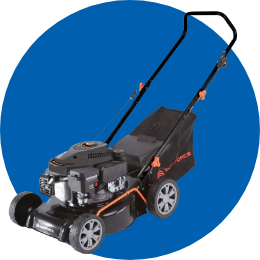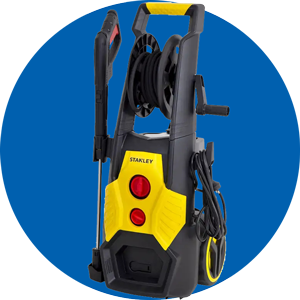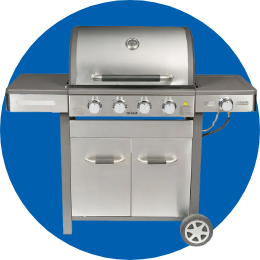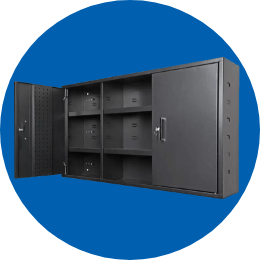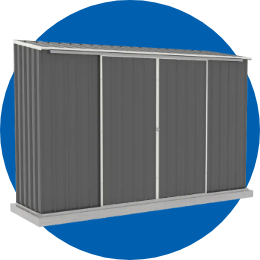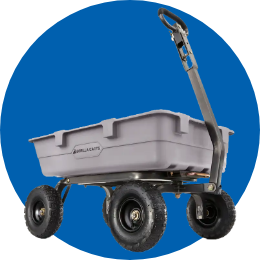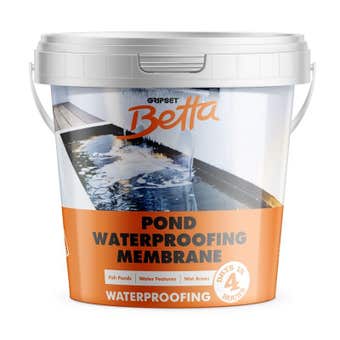- 12 November 2021
Build a frog pond
Frogs are much more than cute creatures
Frogs are essential members of the ecology. They fill a unique niche in the food chain, but have been noticeably absent from many localities in recent years. Their presence is now widely considered to be an indicator of the health and balance of a local ecology. Apart from that, kids just love them! They grow from tadpoles to frogs quite quickly, and they’re a great way to help children learn how to care for other living things. It’s fairly easy to create a small environment that will attract frogs and help them to thrive. There are only a few essential items to consider, and you need not spend any money at all!
Tools for the job
- Tape measure
- Shovel or spade
- Spirit level
- Utility knife
- Gardening tools
- Bucket
- Fine fish net (aquarium tank net)
- Frog identification information
Step 1: Location
Caution: Frog ponds are deep enough for a child to drown. Check local laws before beginning this project. Locate it within a fenced pool area, or fix strong steel mesh close to the surface of the pond water. Think carefully about the location of your frog pond. It should be in semi-shade. Aim for no more than one third of the pond to receive sun. Sunshine is essential for algae growth, and algae is essential for healthy tadpoles and frogs. You’ll need space to grow plants densely and overhanging the pond. The chosen position should be somewhere out of reach of cats and dogs, if possible. Be careful not to locate the pond under a tree with poisonous leaves or sap, or trees that flying foxes visit regularly
Step 2: Pond structure
You can make your pond in many ways and from many materials, as long as it will hold water. The quickest way is probably a pond shell made from hard plastic or fibreglass. Pick one up from your local Mitre 10 Garden Centre and simply set it into the ground. A cheaper alternative is a PVC or butyl rubber pond liner. These require a carefully-dug hole, as the shape of the hole forms the shape of the pond. Dig the shape and size you want, but about 50mm deeper than the finished pond. You can use the “waste” soil removed from the pond to build up the ground level around the pond. This will help to prevent ground water from flowing into the pond (possibly bringing fertilisers and pesticides with it), and save you some digging too! Spread clean sand in the hole to a depth of about 50mm. The sand helps prevent the liner from puncture against sharp stones. Lay the liner in the hole and half fill with water to hold it in position while you finish off the edges. Hold the liner down around the edges with sand, stones and hollow logs. This not only keeps the liner in place but provides lots of hiding places for the frogs. Place a rock, hollow pipe or log in the bottom of the pond to provide hiding places for tadpoles. Birds such as herons, cranes and kingfishers will check out your pond and try to catch the tadpoles and frogs, so they’ll need lots of hiding places. There’s no need for a filter or pump. While clean and aerated water is a good idea, there’s a chance that your pump will ingest tadpoles. If you’re very keen to filter the pond, use fine flyscreen to make sure the tadpoles can’t be sucked in.


Step 3: Plants
Plants will play an important role for the frogs. Grow tall grasses (not lawn) up to the pond edge and allow them to overhang into the pond water. Use local grasses and plants that frogs are already at home with. Frogs need the protection and vantage points that low-growing plants offer, as they will use these plants to call from during the mating season. Grow a diverse range of plants including trees and shrubs, sedges, ferns, grasses and ferns. Also plant a few insect attractors to help provide food for the frogs. Ask for advice about local types at your Mitre 10 Garden Centre. Aquatic plants can be placed in the pond to provide tadpole shade and hiding places as well as a spawning location for adult frogs. These are simply grown in pots placed on the floor of the pond. If the pond is too deep for a particular plant, sit it on bricks or pavers to adjust the height. Take care with mulch around the pond, because pine bark can be too acidic. Instead, use leaf mulch or compost.
Step 4: Water
Ordinary tap water may kill tadpoles, due to its chlorine content. Use rainwater, if available, to top up the pond. Tap water can be used if you let it stand for 5 to 7 days. This will allow enough time for the chlorine and other chemicals to dissipate. Alternatively, add water-neutraliser or water-ager.
Step 5: Getting started
A well-designed pond with appropriate vegetation will naturally attract wildlife into your garden – including native frogs and birds. They manage to travel considerable distances during the night. It is illegal in many parts of Australia to go to the bush and take frogs from their natural habitat, after all, you’re trying to increase the number of frogs in the wild. Never take frogs, tadpoles or eggs (or any other animal) from a National Park or Wildlife Refuge. You should also check with your local wildlife authority about keeping frogs, because they are protected in some states and you may need a permit to keep them. Cane Toads can be a problem. If you live in a cane toad area you can use chicken wire to keep them away from your pond. Avoid the possibility of breeding them by being selective about eggs and tadpoles: cane toad eggs are black and laid in long “strings” of clear jelly, whereas most frogs lay eggs as a mass of foam or clumps of jelly. They also lay many more eggs (up to 35,000) and their tadpoles are very dark, they congregate in schools, and they have a short tail relative to their body.
Step 6: Raising tadpoles
Should you find you frog pond now has tadpoles there’s not much to do except feed them the right things. If algae is growing in your pond it will supply both food and oxygen – so don’t feel tempted to clean it out! A little variety of food choice is necessary for a thriving tadpole population. They will eat decomposing vegetable matter that simply falls into the pond, but to be sure they don’t start cannibalising each other, you can feed them regularly. Lettuce is a good food for tadpoles. Wash the lettuce well, boil it, drain and cool. Roll the lettuce into small balls and feed it to the tadpoles judiciously. The lettuce can be stored in the freezer. Don’t overfeed them or the pond may be stagnated. Don’t be tempted to add fish to the pond. Many fish will eat frog eggs and tadpoles, and compete with them for food and air. An exception is the Pacific Blue-Eye, which will live harmoniously with tadpoles and help control mosquito lavae. In excellent, warm conditions a tadpole can develop into a frog in as few as 16 days, but in cool locations it can take up to a year.


